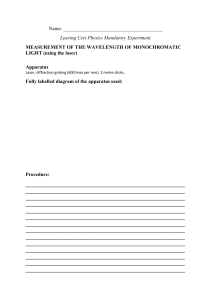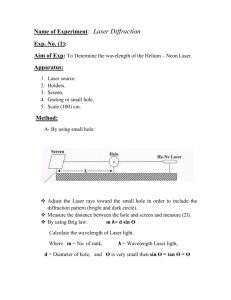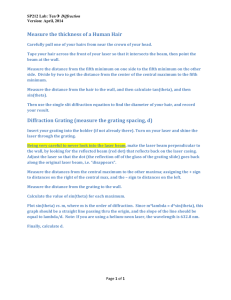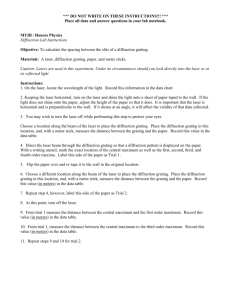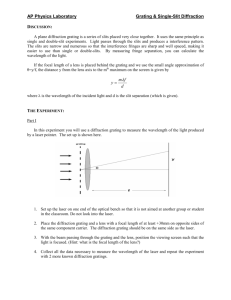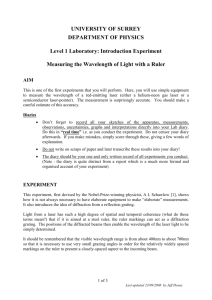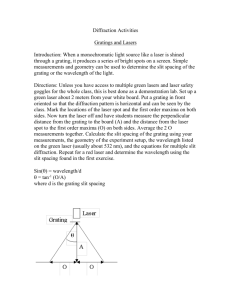Laser & Sound Diffraction Lab Report: Calculations & Analysis
advertisement
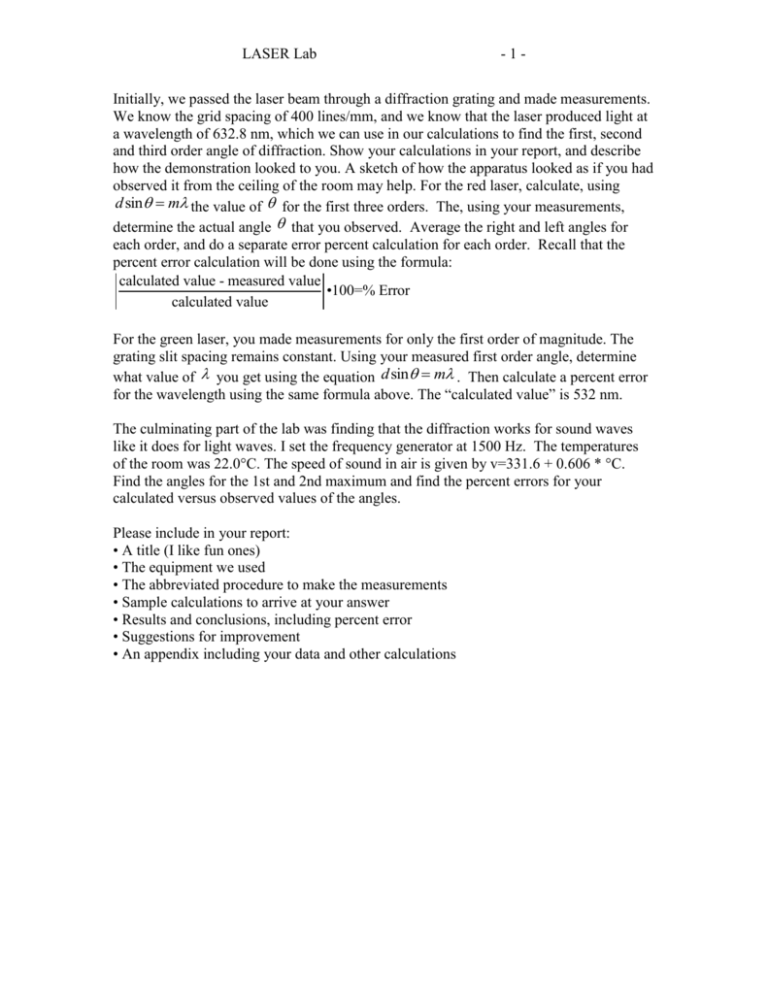
LASER Lab -1- Initially, we passed the laser beam through a diffraction grating and made measurements. We know the grid spacing of 400 lines/mm, and we know that the laser produced light at a wavelength of 632.8 nm, which we can use in our calculations to find the first, second and third order angle of diffraction. Show your calculations in your report, and describe how the demonstration looked to you. A sketch of how the apparatus looked as if you had observed it from the ceiling of the room may help. For the red laser, calculate, using d sin m the value of for the first three orders. The, using your measurements, determine the actual angle that you observed. Average the right and left angles for each order, and do a separate error percent calculation for each order. Recall that the percent error calculation will be done using the formula: calculated value - measured value •100=% Error calculated value For the green laser, you made measurements for only the first order of magnitude. The grating slit spacing remains constant. Using your measured first order angle, determine what value of you get using the equation d sin m . Then calculate a percent error for the wavelength using the same formula above. The “calculated value” is 532 nm. The culminating part of the lab was finding that the diffraction works for sound waves like it does for light waves. I set the frequency generator at 1500 Hz. The temperatures of the room was 22.0°C. The speed of sound in air is given by v=331.6 + 0.606 * °C. Find the angles for the 1st and 2nd maximum and find the percent errors for your calculated versus observed values of the angles. Please include in your report: • A title (I like fun ones) • The equipment we used • The abbreviated procedure to make the measurements • Sample calculations to arrive at your answer • Results and conclusions, including percent error • Suggestions for improvement • An appendix including your data and other calculations
